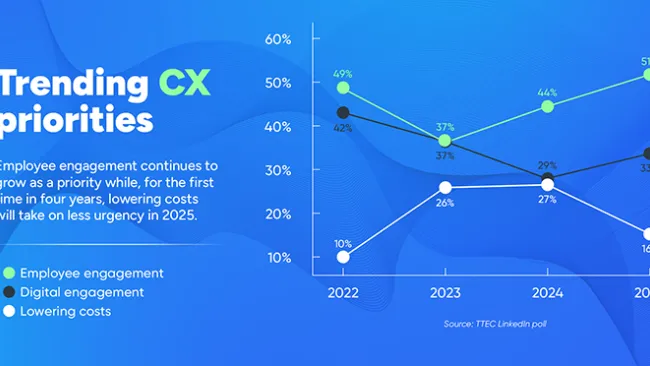There’s a constant effort to provide customers with the “best” experience. But what is the best experience? Even with a journey map in hand, there’s an inevitable push and pull of wanting to create an engaging beneficial customer experience that results in a high NPS score as well as an uptick in revenue.
Scripting customer interactions is an effective way to remove complexity from the customer interaction and enable associates to focus more on the customer, instead of the process. A common theme in the market is the fear that, with scripts, the conversation may appear inauthentic or that associates may not have all the right information. Yet if deployed correctly, scripts can be a valuable tool to improve customer experiences.
A good example of how scripts are helpful is when it comes to omnichannel interactions. The current customer support trend is to provide the customer with as many channels as possible to interact with the brand. Whether it is mobile, social, chat, video, or an old-fashioned phone call, the result still needs to be the same: the customer needs to find a resolution for the situation at hand. Scripting customer interactions ensures that the customer journey is consistent across channels. Customers also know what to expect from the company regardless of the channel that they use. Predictability creates brand loyalty, which is something that McDonald’s and Starbucks have proven globally.
Some complain that scripts are too robotic and remove the personal connection. We disagree. To personalize the customer experience, a script can enable a company or brand to deliver the right level of service without making customers uncomfortable. For example, prompting associates to acknowledge callers who are frequent shoppers provides a personalized experience without being too invasive or “creepy.”
This helps move toward an ideal experience using scripts. It’s important to focus on the end goal of the customer. If a support representative can guide a customer to a positive end-result, such as making a purchase decision sooner, by using a well-written script, then it’s a win.
What a good script looks like
Scripts come in many shapes and forms, which is why leveraging the right technology and designers are critical. The two cannot be separated. Just as a grand piano needs a skilled pianist to produce excellent music, a well-written script requires an experienced designer and the right technology.
Here are four key things to keep in mind when setting up the scripted experience.
1. How do I enable the conversation?
A successful script should remove some of the thought process from the associates, allowing them to focus on the customer’s response, instead of thinking about the next step.
The right knowledge management system with interactive scripts will support scripting as basic as Yes/No process flows all the way to complex decision trees all of which can be exposed to associates, sales, partners, and customers.
2. What information must I present at the beginning of the conversation to stay compliant?
Compliance matters. Make sure associates have the information they need for each interaction to stay compliant with industry regulations.
Since disclaimers and regulations change, even among different customer interactions, it’s critical to keep this up to date. The right technology and design will enable knowledge managers (and the legal department) to quickly update the information without having to print out a single paper. The ability to make real-time edits and push information to the frontline can reduce maintenance costs and exposure to risks.
3. How am I going to maintain this script over time?
Trust in the technology and the information is critical for an associate to provide a positive customer experience. To maintain this trust, the information must be regularly reviewed and updated. Having the right content maintenance model and tools are very important. Not only will it reduce the administration cost, it will improve employee and customer satisfaction.
4. How can I improve?
Cloud technologies are excellent at capturing data. Content managers can leverage this data to know which scripts are efficient and which scripts are ineffective. By tracking usage rates, encouraging associate feedback (informal comments and formal ratings), and analyzing associate metrics, scripts can be optimized over time to provide a more relevant and engaging experience.
We also encourage companies to incorporate the scripts into onboarding and create an associate benchmark. By connecting performance data from onboarding with ongoing associate support metrics, coaches and managers can track an associate’s performance over time. This type of analysis allows for more insightful data-driven services.
If done well, scripting customer interactions offers numerous benefits: it ensures a consistent experience and enables associates to be compliant with industry regulations. But companies also need the right technology and knowledge to keep up with changes in information and to quickly make updates. Ultimately the best scripts allow the associate to do what he or she does best: meet the customer’s needs.
Like this post? Subscribe to our customer experience blog.
Also, check out the most recent issue of our monthly customer experience eNewsletter, Dialogue.

















